It doesn’t matter if your pup has water at home, filtered or not. That’s still not the only thing he drinks throughout the day. Your dog will instinctively want to drink water when he sees it.
It is often harmless but, on occasion, the wrong water may cause your dog to have health issues. The most common water types that make dogs sick were identified by several veterinarians. We also discussed how to prevent your dog from getting into these situations.
Park Puddles
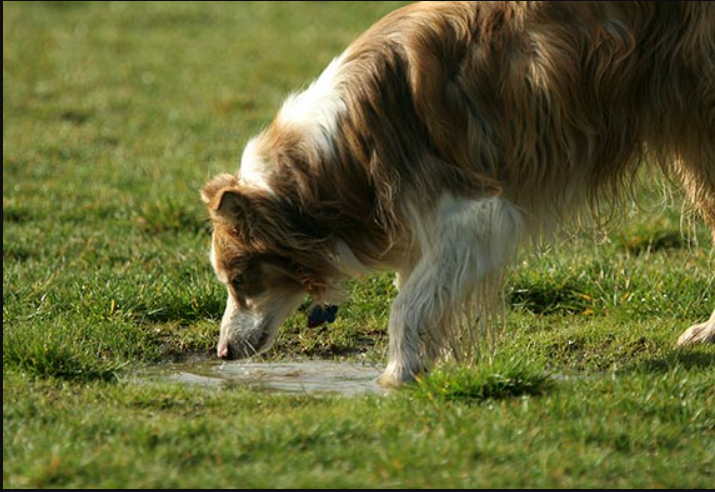
Dog parks with off-leash areas are popular place for pups to find stagnant pools of water. For them, drinking fresh and filtered puddles of water is the same as drinking out of a bowl.
Jennifer Hennessey is the owner of Veterinary Emergency of NW Houston. The water in this type may be contaminated with animal waste and contain bacteria and viruses.
Infection Symptoms: Diarrhea, vomiting, abdominal pain, or diarrhea. Hennessey says that many of the illnesses and symptoms listed above will require veterinary treatment. She says it’s crucial to notify the veterinarian team about the exposure. The treatment is usually fluid therapy and medications to treat stomach upset. Sometimes hospitalization may be required.
Prevention Tip: Have your pet drink from the travel bowl or water bottle between games to ensure proper hydration. Keep your pets leashed when in an area with large, stagnant bodies of water.
Pool Water
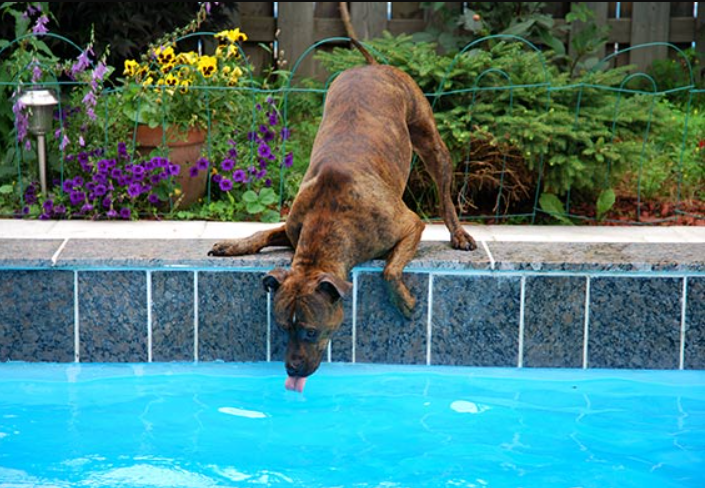
If your dog consumes large amounts of pool water (whether it is saltwater or freshwater), he could be in danger. Hennessey says that most pools are clean. Even diluted chemicals can be too strong if your pool is your dog’s only source of drinking water.
She says that drinking small amounts of water every so often will only cause additional thirst due to the salt or chlorine additives added for treatment. Your pet may urinate and become dehydrated if they continue to drink from the pool.
Toxicity Symptoms: Increased thirst, excessive urination and accidents when indoors.
Prevention Tip: Use a fresh bowl of water instead of pool water. Give your dog a reward and praise him when you notice him drinking from the bowl rather than the pool. You should also limit the access of your dog to the swimming pool. This can be done by either closing the gate, or not allowing them to swim around unattended.
Stagnant Ponds & Lakes
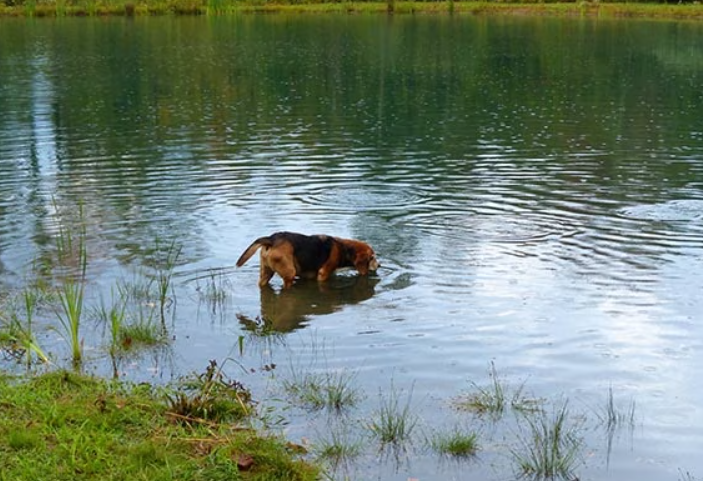
This type of Stillwater can be a breeding ground for a large number of bacteria, viruses and fungi that are potentially harmful. It may also harbor parasites such as Coccidia or Giardia. Jeff Werber DVM, Los Angeles veterinarian, says that ponds and lakes can be particularly susceptible to blue-green algal growth in warm months.
As the algae begins to decay, it releases toxic substances into the water. He explains that dogs will often drink water contaminated with algae when they smell the algal odor. It can cause damage to kidneys, the liver, intestines, and the nervous system. Even swimming in water contaminated with algae can cause skin irritations.
Leptospirosis is another bacterial disease that can be contracted by dogs in stagnant water. Tracey Gillispie, IndyVet vet, says that leptospirosis is one of most dangerous diseases for dogs because it can cause irreversible kidney damage.
Toxicity Symptoms:
Gillespie adds that signs of leptospirosis–including lethargy, malaise, and fever–can be subtle at first. She says that symptoms can progress into vomiting, diarrhea and increased thirst or urination. In some cases they may even lead to jaundice, a yellowing of mucous membranes. The symptoms can appear anywhere between several hours and a couple of days following the exposure.
Prevention Tip:If you notice any of the symptoms above in your dog after he has drank or swam in water that is potentially contaminated, consult your veterinarian right away. Avoiding these standing water bodies is the best way to protect your dog, especially if there is visible algae growth. If you are having fun with your family, keep pets in the boat or leashed when near standing water. Toys and balls should not be thrown into water that hasn’t been treated, particularly if it is covered in a brightly colored film (this may indicate harmful algae).
Toilet Water
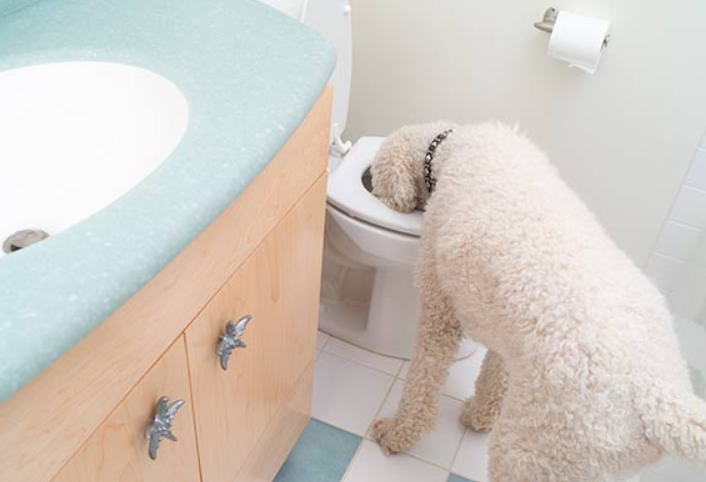
Toilets can be treated in a variety of ways to keep them clean. These include using toilet bowl disks or bleach additives. Hennessey says that many of these products may seep into the toilet water.
She explains that these chemicals are usually diluted to ensure they don’t harm pets. But that does not mean they aren’t harmful. Pets who drink from toilets can still be exposed to toxic chemicals that could cause serious harm.
Toxicity Symptoms: Vomiting, and stomach irritation. Hennessey says that if a dog is vomiting it’s important to provide hydration and medication in order to prevent further dehydration.
Tips for prevention: Keep the toilet lid closed and the bathroom door closed.
Ocean Water
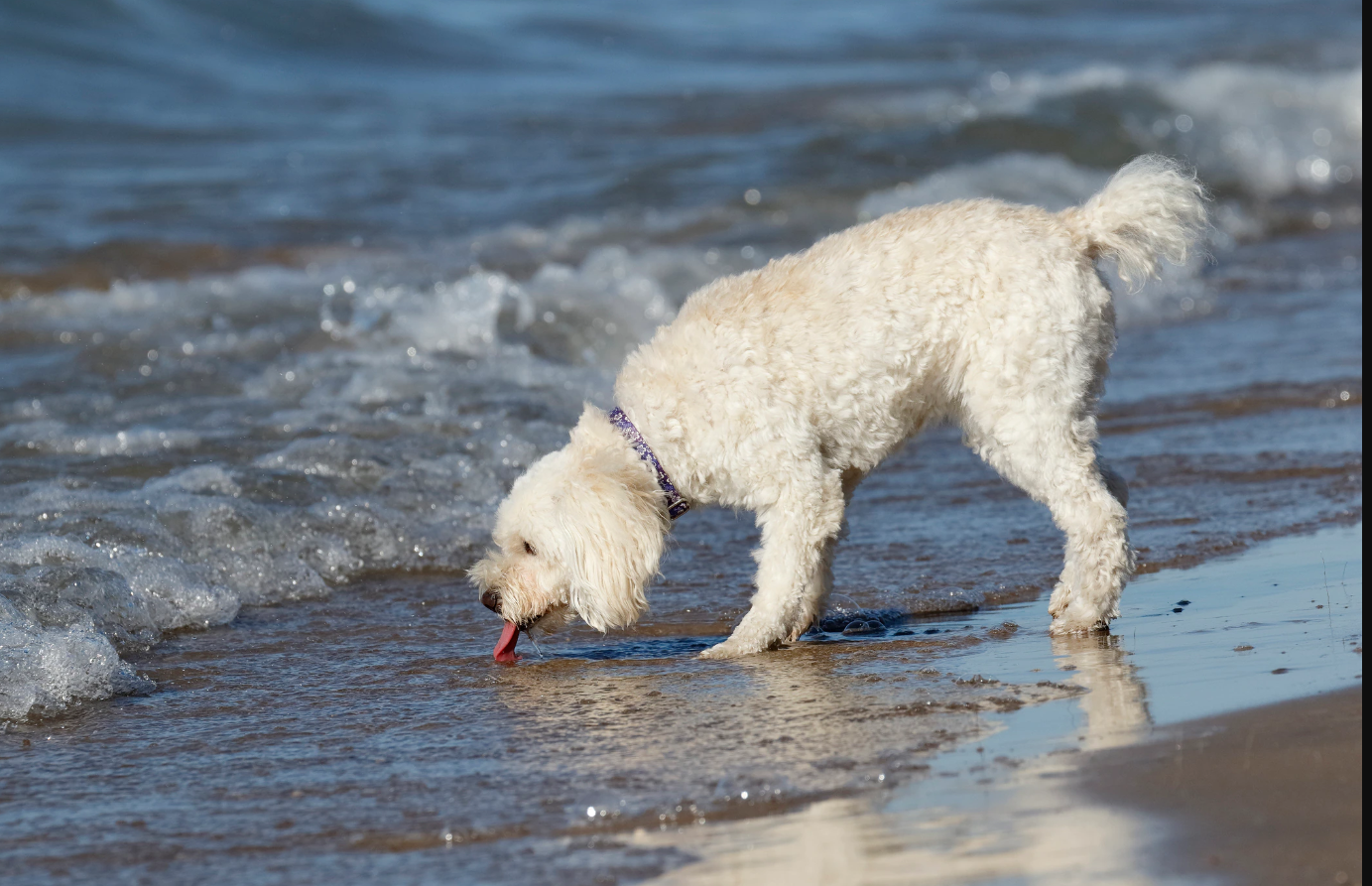
Distilled Water
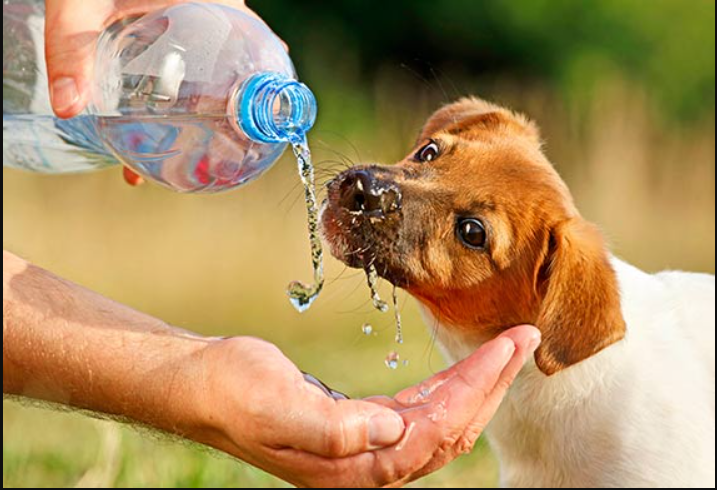
It is safe to give your pet a small amount of distilled or filtered water. However, using it as the only source of drinking water can have serious consequences.
Hennessey says that “distilled drinking water is devoid of minerals, and this can lead to the loss of important electrolytes by the kidneys. This leads to low levels in the blood.” The water is more likely to soak in tissues than mineral-rich water, leading to edema, overhydration, and water toxicity.
Toxicity Symptoms: Fatigue and irregular heartbeat.
Prevention Tip: Do not provide distilled water exclusively as a drinking source.
Yard/Home Puddles
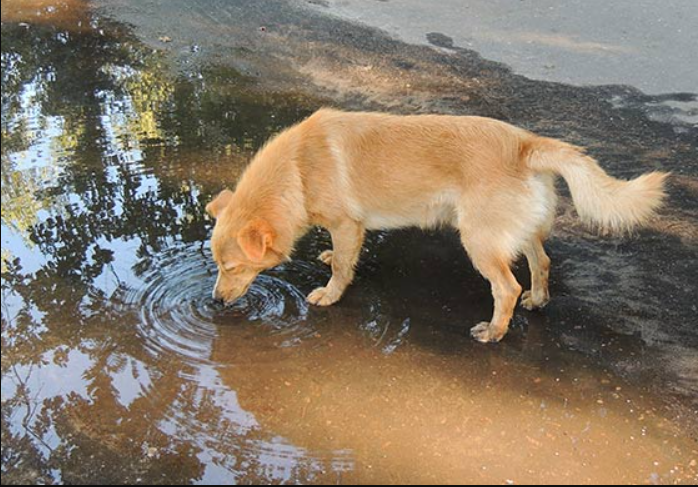
The dangers of water are not limited to the home, says Werber. The water found in the garage and around your home may be contaminated with hidden poisons which can harm pets. The water that accumulates around the house or garage may contain chemicals such as pesticides and fertilizers. It could also include antifreeze, ethylene glycol, cleaning products, and cleaners.
Toxicity Symptoms: Dehydration, vomiting, diarrhea, tremors or depression of the nervous system, seizures, agitation and seizures.
Prevention Tip: Keep your dog away from any puddles around the home. You should be careful to choose products that are not toxic and keep them away from your home.